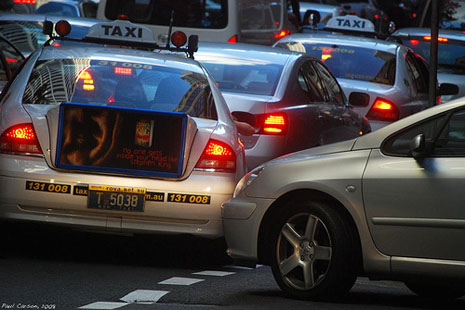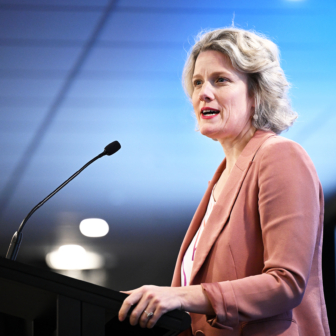These quotations from recent expert research tell the story of a city in serious distress mode. Maxine McKew – the federal parliamentary secretary responsible for urban affairs – agrees, and her dismay over Sydney’s plight is echoed elsewhere in the Canberra bureaucracy, where the message seems to be unequivocal: if Sydney wants federal dollars it must get its planning act together.
McKew’s position also resonates with recent studies by the Sydney Business Chamber and the Independent Commission Against Corruption – both of which argue for root-and-branch reform of Sydney’s local government arrangements, which have defied change since the 1950s.
As for the state government, the word emergency springs to mind. There is no one on the bridge, and the biggest ship in the fleet is drifting in a sea of political indifference and ministerial and bureaucratic turbulence.
At the local level, forty-one metropolitan councils and around 500 elected part-time councillors struggle to cope with an ever-increasing load of parochial demands while being pushed to comply with a metropolitan planning strategy that has no statutory force and changes its shape, chameleon-like, every few years.
With a population approaching 4.3 million, metropolitan Sydney’s health and environmental infrastructure is under extreme stress; and the extraordinary inadequacies of the public transport system have now been laid bare with the release of the final report of the independent public inquiry commissioned by the Sydney Morning Herald and chaired by Ron Christie.
It is not stretching the point too far to assert that Sydney has lost its way. Barely a week passes without an announcement of yet another cabinet crisis, bureaucratic mishap or policy blunder. Around town and across the region there are clear signs of a widespread diminution of public confidence in the capacity – if not the ability – of the state government to govern the metropolis effectively, efficiently, sustainably.
The key question is simply stated. At the metropolitan level, how should we best manage the urban environment and its associated land uses, its transport systems and its infrastructure?
Some Sydneysiders might be excused for believing that because Clover Moore MP is also the mayor of the City of Sydney, finding an answer to this question is her responsibility. But if we are talking about the metropolitan region, nothing could be further from the truth. Lord Mayor Moore’s bailiwick is no more than a tiny chunk of a balkanised region. She sits as only one of about forty-one mayors, all of whom must work within a welter of state government controls emanating from Macquarie Street.
There is no mayor of metro Sydney. Finding leadership or political responsibility for the metropolis as a whole is a fruitless exercise, because neither of these rare commodities exists in this city. Nor is there a Minister for Sydney or a government agency solely responsible for metropolitan planning. There is not a single bureaucrat or politician who can raise his or her hand and say I am the one when it comes to a search for a leader or champion for greater Sydney.
The reality is a fiendishly complex array of ministries, departments, authorities, commissions and other units of government – not one of which can claim a leadership role.
Amid this chaos, the Christie report has helped to peel away the bureaucratic detritus that has clogged (if not prevented) the delivery of a world-class public transport system to a long-suffering public. According to Christie, institutional deficiencies constitute a core weakness in the current arrangements. The inquiry report presents a prima facie case for a unitary approach to transport planning and management in order to counter the current “mess” involving “a highly fragmented and divisive public transport planning [system].”
There is no doubt that metropolitan governance is a complex matter with no universally applicable model. Given the constraints of his terms of reference, Christie is understandably reluctant to grapple seriously with this issue – one which obviously subsumes the second-order issue of public transport with which he has dealt very forcefully and effectively. The consequence is that designing a framework for governing metro Sydney is left floating for another inquiry on another day.
When that other day arrives, we might hope that serious attention is given to what comparable cities have done or are doing. London has gone for a council and an elected mayor for the entire metropolitan region. Portland, Oregon, has a metro council. Brisbane, unique in Australia, has a single metro-wide council and mayoralty. There are numerous other cases worth looking at.
Successful models are noteworthy for at least one reason: the fact that they bring a strong metropolitan view to the integrated resolution of land-use and transport planning problems at a regional scale. In most cases the provision of local services remains the responsibility of local councils.
The Christie report is a courageous and cogently argued case for an end to cowboy transport planning for Australia’s biggest city. The report pulls no punches in its careful exposure of past mistakes, mishaps, policy stumbles and the like, while acknowledging occasional successes such as the Epping–Chatswood rail link.
But if you were hoping for an inspirational journey into the more daunting territory of metropolitan governance itself, you will have to wait. And the mayors and councillors of Sydney’s forty-one councils can relax. Under Christie, they are safe.
Safe, that is, until a future state administration – perhaps encouraged by strong and persuasive signals from Canberra and from a cluster of powerful lobby groups – summons the guts and gumption to give the issue of metro governance the kind of objective public scrutiny that has been the singular hallmark of the Christie Inquiry. •




